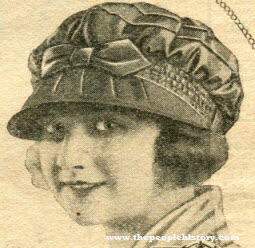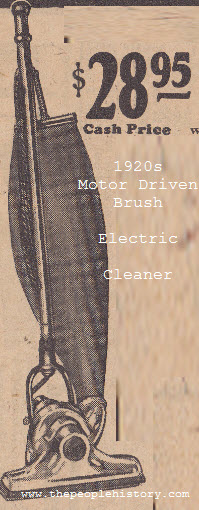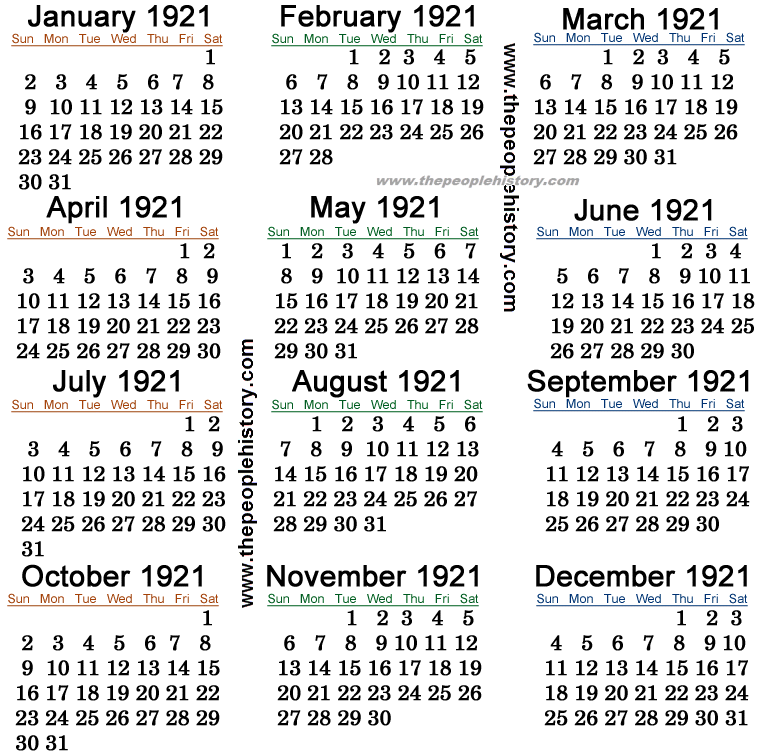The Year 1921 Major News Events in History
- May 19th The Emergency Quota Act is passed into law
- May 20th Tulsa Race Massacre
- August 25th United States / Germany Sign Treaty of Berlin
- November 11th Tomb of the Unknowns is dedicated in Arlington National Cemetery
- July 1st The Communist Party of China is formed with Mao Tse-tung (Zedong) as a founding member
More Detailed Information on each Event and those not included can be found below
What Happened in 1921 Important News and Events, Key Technology & Popular Culture
1921 Year In History including 1921 Year In History including Major World Events include Boeing ending furniture-making, Irish Free State Created, Emergency Quota Act Limits Immigration, Ku Klux Clan, Major Famine in Russia.
United States -- Emergency Quota Act is passed
The Emergency Quota Act is passed into law on May 19 News Events
The act limited the number of immigrants that were allowed to come to the United States. The yearly limits that were created restricted the number of immigrants from any country to three percent of the number of people from a country already living in the USA as of the 1910 census. This did not restrict immigration from Latin America and professionals were also excluded from the limits, no matter their nationality.
The Emergency Quota Act was a response to anti-immigrant sentiment and the high unemployment that followed World War I. The quotas mainly effected Eastern and Southern European immigrants, greatly limiting the number of people from those war-torn countries that were allowed into the United States. It also marked an important point in US immigration policy, becoming the first instance of restrictions on European immigration and the first use of a quota system.
Part of 1921 Accessories
 Automobile Cap
Automobile CapPrice: $1.29
Unusual value and splendid quality in this smart automobile cap, cut very full and made of a good quality tussah silk. Veil loops at side. Dainty shirring and tucks. Elastic in headband insures comfortable fit and holds hair securely. Choose from sand color or navy blue.
Ireland -- Irish Free State created
The Irish Free State is created (as Southern Ireland).
More Information and Timeline The Irish Free State
1. The Irish Republic convenes the First Dáil, their unicameral parliament, and issues their Declaration of Independence from the United Kingdom on January 21st of 1919.
2. The Irish War of Independence begins when members of the Royal Irish Constabulary are attacked and killed by Irish Republic Army volunteers on January 21st, 1919.
3. Violence during the war increases after Bloody Sunday, when IRA operatives assassinate twelve British Army officers, one Royal Irish Constable and a civilian informant on November 21st, 1920. The Royal Irish Constabulary responded by opening fire at a football match, killing fourteen civilians.
4. Northern Ireland is created on May 3 News Events, 1921 by an act of the British Parliament. The majority of those living in Northern Ireland wanted to remain a part of the United Kingdom.
5. The Irish Republic and British government sign the Anglo-Irish Treaty on December 6th, ending the Irish War of Independence and paving the way for the creation of the Irish Free State.
6. The Irish Free State is officially formed one year after the Anglo-Irish treaty on December 6th of 1922 . The Irish Free State lasts until 1937 when the Constitution of Ireland creates the state of Ireland as we know it today.
United States -- Tulsa Race Massacre
The Tulsa Race Massacre takes place over May 31st and June 1st .
1. Oklahoma becomes a state in 1907 and implements Jim Crow laws which enforce racial segregation and disenfranchise Black citizens.
2. The city of Tulsa, Oklahoma passes an ordinance that makes residential racial segregation mandatory on August 16, 1916. The US Supreme Court declares it unconstitutional but it remains in place.
3. The "Red Summer" of 1919 takes place with race riots in many cities across the United States, raising racial tensions in an already unstable post-World War I society.
4. The traditionally Black district of Greenwood in Tulsa, Oklahoma flourished in the early 1900s and is called the "Black Wall Street" as it boasts the wealthiest Black community in the country.
5. Some sort of interaction occurs between Sarah Page, a white elevator operator, and Dick Rowland, a Black teenager. Later, Rowland is accused of assault and arrested. Page decides not to press charges against him and it is unclear what actually happened between the two of them, but historians state the most likely explanation was Rowland stepped on Page when entering the elevator and Page screamed. Rowland is held at the Tulsa Court House and local newspapers start publishing sensational reports of the incident and spread rumors of a potential lynching. A group of hundreds of white people gather and start to form a lynch mob.
6. The Tulsa County Sheriff orders his men to form a defensive position in order to protect Rowland and a small group of armed Black men, including several World War I veterans, come to the courthouse to offer their assistance to the Sheriff but are turned away. After seeing the armed Black men, many of the white mob went out and gathered weapons.
7. Shots are fired and fighting breaks out between the white mob and the Black community. The mob enters the Greenwood district and starts destroying homes and businesses, firing on any Black bystander. The National Guard starts arresting Black citizens and detaining them in a convention hall.
8. Gunfights continue through the night and into the next day, June 1st, the white mob starts setting fire to the Greenwood district during the night and there were even reports of air attacks on the district in which incendiary bombs were dropped. An area of about 40 city blocks was set on fire.
9. National Guard troops from Oklahoma City arrive and declare martial law in the area by noon, stopping most of the violence. There is controversy surrounding the records of dead and injured, the state's official death toll was recorded as 36 dead. But, historians estimate as many as 300 Black citizens were killed and thousands were injured. Most of the Greenwood district was destroyed and a community of 10,000 Black citizens were left homeless. Many chose to leave or were forced to relocate after the massacre.
10. The Oklahoma state legislature passes the "1921 Tulsa Race Riot Reconciliation Act" in June of 2001, as an attempt to provide some sort of reparations for the incident. The act created a memorial to those who died, scholarships for descendants of Greenwood residents, and some economic development for the district.
Tomb of the Unknown Soldier
1. The idea for a memorial to unidentified soldiers lost in World War I was credited to David Railton, a chaplain during the war, who had noted a grave for an unknown soldier in 1916 on the Western Front.
2. November 11, 1920, the first burial at the United Kingdom's Tomb of the Unknown Warrior in Westminster Abbey takes place.
3. France did the same on the same date at the base of the Arc de Triumph with six unidentified soldiers from World War I.
4. March 4th, 1921, the United States Congress approves the burial of an unidentified soldier from World War I at Arlington National Cemetery. The inscription on the tomb reads "Here rests in honored glory an American soldier known but to God."
5. The United States' ceremony was held on November 11, 1921 in the plaza of the Memorial Amphitheater at Arlington National Cemetery.
6. US President Warren G. Harding officiated the ceremony.
7. Congress approves the money to finish building the tomb in 1926, it was not officially completed until 1932.
8. The tomb has been under the guard of the military since 1926. US Army soldiers act as Tomb Guards, in what is considered one of the most honored positions to have in the Army. The role includes strictly outlined duties and ceremonial procedures.
9. US President Dwight D. Eisenhower selected unknown soldiers from World War II and the Korean War to be buried at the tomb on August 3, 1956. The official burial took place in 1958.
10. The funeral for an unknown soldier from the Vietnam War was laid to rest at the tomb on May 28, 1984 with President Ronald Reagan officiating the ceremony.
11. The memorial was later renamed "Tomb of the Unknowns" to commemorate more than just World War I's lost soldiers.
12. It has been continuously guarded every minute of every day since 1937.
Part of 1920s Appliances

Motor Driven Brush and Suction Cleaner
Price: $28.95This cleaner not only uses suction to lift the dirt and dust it also includes a motor driven brush to help remove dust and dirt from the carpet before the suction lifts the dirt into the bag
Part of 1920 Fashions
Twenties Dainty Dress Up Frock
 Gingham Middy and Skirt
Gingham Middy and SkirtPrice: $2.29
The two-piece middy style is very convenient for sport, outing, street or general utility wear. The material is gingham, our Standard Quality Middy can be worn plain or in popular cuff bottom effect and can be used separate from the skirt if desired. Choose from tan middy with red check trimming and skirt or tan middy with Copenhagen blue check trimming and skirt.
Part of 1920s Cars
 1929 Chevy 1-1/2 ton Truck
1929 Chevy 1-1/2 ton Truck Price $545.00
The late 20s Chevy trucks were based on a 6 cylinder engine with four speed forward transmission and one rear gear, 4 wheel brakes
Technology
>More and more tests and advancements are being made that will later provide the basis for television technology that will be used in millions of homes.
With the changing needs of the airline industry and the future, Boeing obtains orders for aircraft and abandons furniture-making.
Albert Einstein receives the Nobel Prize in Physics.
United States -- Sheppard-Towner Maternity and Infancy Act
The Sheppard-Towner Maternity and Infancy Act becomes law, marking one of the first times the United States ventured into social security
On November 23rd , U.S. President Warren G. Harding signs the Sheppard-Towner Maternity and Infancy Act into law. The act was the United States first foray into social security as it provided one million dollars every year over five years with the purpose of aiding state-run programs that help women and children. The law was created with the intention of lowering the high mortality rates of mothers and babies and focused particularly on helping develop rural facilities that specialized in giving prenatal and newborn care.
Ireland -- War of Independence
The Irish Republican Army and British forces agree to a ceasefire.
The Irish War of Independence ends during July when the Irish Republican Army and British forces agree to a truce. The fighting between the two sides had begun in 1919 after Ireland declared its independence from Great Britain. The two sides eventually signed the Anglo-Irish Treaty later that year which officially ended the conflict. The treaty also helped to create the semi-independent Irish Free State, which would later become the fully independent Republic of Ireland.
Poland -- Treaty of Riga
The USSR and Poland agree to the Treaty of Riga.
In March , Soviet Russia and Poland signed the Treaty of Riga. The treaty established a permanent border between the two countries. The borders set in this treaty were in effect until the outbreak of World War II, after which different borders were established. The treaty also ended the Russo-Polish War that had taken place between 1919 and 1920, during which the two sides fought over control of Ukraine.
Soviet Union -- Soviet-Georgian War
The Soviet Union invades the Democratic Republic of Georgia.
The Soviet-Georgian War begins during February when the Soviet Red Army, who were Bolsheviks, invaded the Democratic Republic of Georgia to overthrow their Menshevik government. The invasion was successful with the Soviets quickly gaining control over the Georgian capital and the rest of the country by March. It was then declared as the Georgian Soviet Socialist Republic and became a republic of the Soviet Union. The invasion of Georgia was partially orchestrated by future Soviet leader and Georgian-born Joseph Stalin. Georgia remained a part of the Soviet Union until the USSR was dissolved in 1991, giving the country its independence back.
Popular Culture
Irving Berlin's song "All By Myself" becomes popular.
Other popular musicians include Marion Harris, Eddie Cantor, Paul Whiteman, and Al Jolson.
The first major play of the Harlem Renaissance, "Shuffle Along," debuts on Broadway.
United States / Germany -- Treaty of Berlin
The United States and Germany sign the Treaty of Berlin ending WWI for the U.S.
The First World War ends for the United States in August when the U.S. and Germany signed the Treaty of Berlin. This treaty was necessary as the United States did not ratify the 1919 Treaty of Versailles due to concerns over the creation of the League of Nations. The new treaty conferred all of the same rights and conditions as the Treaty of Versailles, but left out any mention of the League of Nations. The Treaty of Berlin was later ratified in October by the U.S. and November by Germany when it became effective.
U.S. -- Babe Ruth Home Run Record
New York Yankee pitcher Babe Ruth hit his 138th home-run during June. Ruth broke the career home-run record that had been held by Roger Connor for 23 years. Ruth would go on to extend his home-run record to a total of 714. The New York Yankees would make their first World Series appearance in 1921 after winning the American League Pennant. Despite his success, the Yankees did not win the 1921 World Series but, Ruth continued to make an impression on the baseball world throughout his career until his retirement in 1935. Ruth’s record would stand for nearly forty years until it was broken by Hank Aaron in 1974.
USSR -- Crimea Joins Soviet Union
The Crimean Autonomous Soviet Socialist Republic is created.
The Crimean Autonomous Soviet Socialist Republic (Crimean ASSR) is created as a part of the Russian Soviet Federative Socialist Republic (Soviet Union) in October . Crimea had previously been a part of the Russian Empire and after the October Revolution of 1917 it was briefly an independent state before becoming involved in the Russian Civil War. During the civil war the region was the last stronghold of the anti-communist White Army, but, after the Red Army defeated the White Army, it soon fell into Soviet control. Control over the Crimean Autonomous SSR region was later transferred to the Ukrainian SSR in 1954.
Russia -- The Great Famine
One of the worst famines in modern times, grips Russia due to the failure of crops.
More Information for the Russian Great Famine
The Great Famine of 1921 in Russia was different from many famines that the world has witnessed in that the number of contributing circumstances surrounding the tragic event were unusual. The economic devastation caused by WWI, the Russian Revolution, the Russian Civil War, certain Soviet policies, and droughts in the Volga region were all culminating factors that added to the scale and severity of the Great Famine.
1. World War I took place from 1914 to 1918 and was a level of destruction unlike the world had seen before. Russia had been a participant throughout the conflict, fighting alongside the Allied Powers.
2. Near the end of WWI a Communist Revolution erupted in Russia during 1917. Tsar Nicholas II and the Romanov family abdicated and as a new government was trying to form, civil war broke out between the Bolsheviks (Communist Red Army) and the anti-communist "White Movement" in late 1917 and lasted into the early Twenties.
3. Just prior to the end of the Russian Civil War, the Great Famine began . The famine began due to a series of droughts and became worse as it was nearly impossible to distribute food throughout the country due to the conflict.
4. The economic effects of WWI, the revolution, and the civil war all compounded the severity of the situation. During the Civil War, the Red Army had been taking grain and food supplies from peasants and farmers to feed the army. This was known as "War Communism."
5. Beginning as early as 1919-1920, the Bolshevik policy of forcefully collecting grain and food supplies from peasants during the civil war also contributed to the famine.
6. Peasants retaliated against the Soviet plundering by reducing their amount of agricultural production and by 1921 the planted crops were about half as much as they had been in the previous years. Leading up to the famine, the peasants didn't have enough food to feed themselves or plant the next season's crop.
7. When the droughts and crop failures began, Russia was unprepared and still caught up in civil war making the results devastating for the population. Famine struck the Volga region the worst and it was estimated that up to 25 million people were affected by the famine.
8. Several uprisings broke out as the famine worsened and eventually Soviet leader Vladimir Lenin agreed to accept foreign aid. Most of the aid came from the American Relief Administration and Save the Children. The American Relief Administration (ARA) was run by future U.S. President Herbert Hoover.
9. On September 1st, the first ARA relief arrived in Petrograd. Unfortunately, failing rail systems and uncooperative rail workers stalled the relief effort. The political problems were eventually resolved and the rails started to run, moving the food supplies to the regions where it was needed.
10. However, the scale of the famine was underestimated at first and the various relief organizations soon realized they needed to bring more food into the country. The problems with the rail system slowed these efforts, along with the impending harsh Russian winter. During the winter there were reports of cannibalism.
11. By August of 1922 the ARA was feeding about 11 million Soviets per day, but, there were still concerns over whether or not the region would be able to plant enough grain for the next season.
12. The United States insisted that the Soviet Union buy grain to plant in the region. Tensions between the Soviet Union and United States were exacerbated when it was found out that the Soviet leadership had been exporting grain at the height of the famine.
13. By 1923 the droughts had ended, along with the Russian Civil War. With the help of the ARA and other relief organizations, the Great Famine also ended. It was estimated that between 1 and 6 million people died during the famine but since documentation was poorly organized at the time, it is unclear what the actual number was.
Note - For this particular timeline we relied heavily on information found in the PBS American Experience episode about The Great Famine ,
Calendar For The Year 1921

Germany -- Adolf Hitler
Adolf Hitler becomes Chairman of the Nazi Party in his rise to power and prominence in Germany.
U.S. -- Franklin D. Roosevelt
Franklin D. Roosevelt, at 39 years old, contracts Polio.
U.S. -- Ellis Island
Ellis Island is placed under quarantine on May 18th due to Typhus Outbreak.
U.S. -- Sleeping Sickness
Sleeping Sickness claims nearly 1,000 lives in the US.
France -- Chanel No. 5
Coco Chanel introduces "Chanel No. 5".
China -- Communist Party
The Communist Party of China is formed with Mao Tse-tung (Zedong) as a founding member.
U.S. -- Chicago White Sox
The Chicago White Sox Baseball team is accused of throwing the World Series Find more about the
U.S. -- Tomb of the Unknowns
Tomb of the Unknowns is dedicated in Arlington National Cemetery.
U.S. -- Cigarette tax
Iowa becomes the first state to impose a cigarette tax on April 11th
U.S. -- Flash Floods
Flash Floods strike Pueblo County in Colorado.
U.S. -- Ku Klux Clan
Ku Klux Clan activities become violent throughout the Southern United States.
Born This Year in 1921
Charles Bronson - - November 3rd
Nancy Reagan - - July 6th
Dirk Bogarde - - March 28th
John Glenn - - July 18th
Major World Political Leaders
Australia - - Prime Minister - - Billy Hughes
Brazil - - President - - Epitácio Pessoa
Canada - - Prime Minister - - Arthur Meighen - - until December 29
Canada - - Prime Minister - - William Lyon Mackenzie King - - From December 29
Italy - - Prime Minister - - Giovanni Giolitti - - until July 4th
Italy - - Prime Minister - - Ivanoe Bonomi - - From 4 July
Japan - - Prime Minister - - Takashi Hara - - until 4 November
Japan - - Prime Minister - - Korekiyo Takahashi - - From 13 November
Mexico - - President - - Álvaro Obregón
Russia / Soviet Union - - Chairman of the Council of People's Commissars - - Vladimir Lenin
South Africa - - Prime Minister - - Field Marshal Jan Christiaan Smuts
United States - - President - - Woodrow Wilson - - until March 4
United States - - President - - Warren G. Harding - - From March 4
United Kingdom - - Prime Minister - - David Lloyd George
Canadian Federal Election - - 1921 - - William Lyon Mackenzie King (Liberal) defeats Thomas Crerar (Progressive) and Arthur Meighen (Conservative).